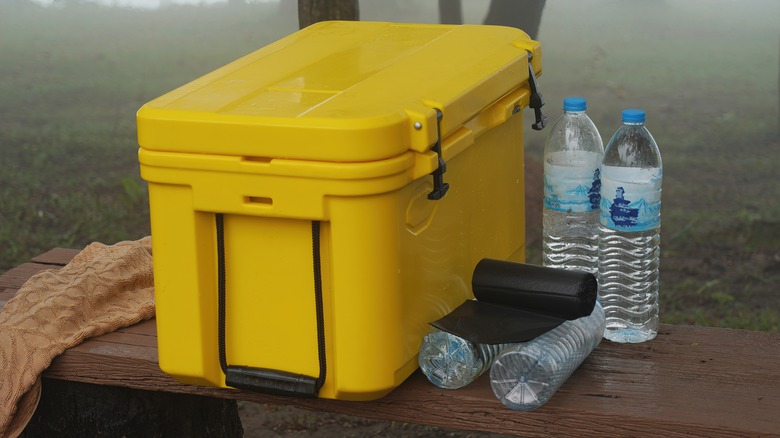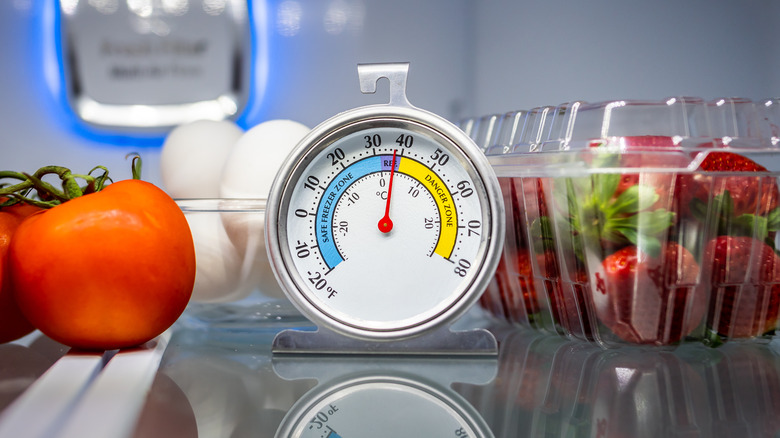The Easy Camping Hack That'll Ensure Your Food Stays Safe To Eat
A primary concern for campers in the wilderness is the freshness and safety of their stored food. After a long journey to your campsite, hours of exploration along the winding trails, and the labor of setting up camp and igniting the campfire, it's easy to lose track of food supplies. However, maintaining the proper temperature for food storage is crucial in preventing the proliferation of bacteria in your food as well as illness by contamination. After all, the last thing any camper wants to do is spend their time in the great outdoors running to the bathroom.
But beyond your personal health, improper food storage can have wider implications. Food that has warmed up and been sitting for a long time can be unsafe to re-store and re-cool. So, by not being proactive in food storage measures, campers also run the risk of contributing to food waste, exacerbating environmental concerns. Fortunately, we've got a hack for you to prevent these unwanted outcomes.
Attach a thermometer inside your cooler
Refrigerators typically operate between 35 and 38 degrees Fahrenheit. If your food remains below this temperature, it is in a "safe zone" for consumption. However, monitoring the temperature inside a cooler can prove challenging. Fortunately, REI offers a useful tip: use a hook-and-loop fastener to attach a thermometer inside your cooler to get an accurate gauge of the box's internal temperature.
Instead of having to guess or use your own body warmth to estimate the temperature of your cooler, knowing the exact temperature can bring you peace of mind. Of course, checking the temperature requires visual access to the thermometer, which means that campers have to open the cooler to perform a reading. However, frequent opening of a cooler allows coldness to escape, compromising its ability to maintain a consistent temperature. Therefore, it's best to limit your amount of checks. Industrial-grade coolers and freezers must undergo two daily temperature checks, but for those on the move, checking every two hours is sufficient — which is probably how often you'd go in to grab a cold beer anyway!
For those who are still concerned that this may be too long to wait between checks, don't fret. The USDA states there is a two-hour grace period where food remains safe to eat, even in warmer temperatures. So, by checking every two hours, you'll land within the buffer zone, and if your cooler's temperature has crept up, you can break out the ingredients you've packed and get cooking right away.

